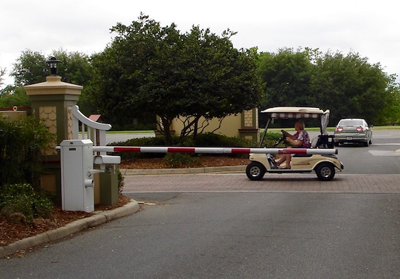Trials, Tribulations, and Opportunities of Lithium Batteries
Lithium batteries have become one of the most important upgrades in the small, task-oriented vehicle (STOV) market. Lithium batteries have been endorsed by virtually all original equipment manufacturers of golf cart type (GCT) vehicles. This includes golf carts used in golf course fleets, LSV/PTVs, and commercial vehicles built on golf car frames, which we at Small Vehicle Resource (SVR) label as light duty utility vehicles (LDUs).
Lithium batteries dominate in the new vehicle market
With regard to current models, that is, new vehicles, lithium penetration could be as much as 50%-60% of the market. This, despite the price premiums exacted for a purchase. One dealer reported that almost all customers inquire about the lithium option, and about one-fifth back off when they hear the price. Simple arithmetic says, conversely, four-fifths or 80% go for the lithium option. The table below indicates lithium battery prices offered by Allied Batteries one of the major companies offering lithium battery products. While these prices are for individual battery types and the equivalent in an OEM new vehicle could be less, they give a flavor of the premium prices involved.
Allied Battery Lithium Battery Prices By Voltage and Amp Hours
|
Part Number |
V / AH |
1-5 |
6-17 |
18+ |
|
AB-CMCL-48V-65AH |
48V 65AH |
$1480 |
$1450 |
$1420 |
|
AB-CMCL-48V-105AH |
48V 105AH |
$1975 |
$1935 |
$1890 |
|
AB-CMCL-48V-150AH |
48V 150AH |
$2750 |
$2675 |
$2600 |
|
AB-CMCL-48V-210AH |
48V 210AH |
$3625 |
$3550 |
$3475 |
|
AB-CMCL-36V-105AH |
36V 105AH |
$1825 |
$1795 |
$1765 |
|
AB-CMCL-72V-105AH |
72V 105AH |
$2825 |
$2750 |
$2675 |
While these anecdotal percentages may be a bit above the average, I don’t believe they are not far off. Indeed, whereas now lithium batteries are offered as an option, soon they will become the standard with lead acid as the lower-priced option.

Which is to say that lead acid batteries, particularly AGM types, with tried and true record of performance, well-known manufacturing technology, and virtually 100% recycling capability will be with us for the foreseeable future.
Aftermarket contrast—dealers more hesitant to endorse lithium
When it comes to the aftermarket, and here we are talking about converting and upgrading older vehicles from lead acid to lithium batteries, market reception is a bit more hesitant.
- A used vehicle is obviously one of less value than a new one, so the expense of a drop-in lithium battery is much greater, as a percent of this value, than the equivalent battery in a new vehicle;
- Whereas lead acid batteries are market tested over decades, lithium batteries are still relatively new and untested—and stories continue to
emerge with regard to dangerous fires associated with these batteries; - Finally, the dealer, who replaces the lead acid battery with a lithium battery, necessarily assumes at least some of the responsibility for its safe operation—therefore, issues of liability arise.
Natural aftermarket shrinkage
One of the subtle aspects of the lithium revolution, as it affects, GCT vehicles, is that the much longer life of lithium batteries, as compared with lead acid batteries, is that used vehicles come on the market with longer battery lives—and thus, are a more valuable and marketable commodity. As the process of conversion to lithium continues, at least for the short to medium term, the greater volume of lithium also tends to have a negative impact on the aftermarket for such batteries.
On the other hand, a used vehicle buyer might trade out the lithium battery that is in the prospective vehicle for something more powerful. For example, a used vehicle may be on the dealer’s lot with a 48 volt, 85 Ah battery in it and under warranty for another 4-5 years. The prospective buyer likes the vehicle, but wants more power for hauling and towing and so opts for a new drop-in touting 210 Ah. Further, as lithium battery prices come down this choice becomes more attractive.
What should you, as a consumer, be aware of when considering lithium power?
Perhaps the most important thing to consider when buying a GCT vehicle and considering the lithium option, is to carefully read the warranty. The warranty will usually spell out the owner’s responsibility for maintaining the battery. While advertised as maintenance-free, lithium battery warranties take exception to running battery down to zero charge, because once at this point. The battery cannot be revived.
Thus, it is important to diligently monitor the state of charge, especially when putting the vehicle to heavy use or using it on an everyday basis in hilly terrain. In Florida the vehicle may have a range of 80 miles. Don’t count on this, for sure, in the mountains of western North Carolina.
Interestingly, you, as the owner, may get some extra help from the factory. Batteries now come with a Bluetooth technology, wherein your battery—yes, the one in your vehicle—can be remotely monitored at the factory. Don’t be surprised, therefore, if you get periodic bulletins from the manufacturer alerting you to your battery’ status. Hey, sometimes technology is helpful.
Cost-benefit analysis: What benefits are you getting at what cost?
Making a choice among the plethora of vehicle models starts with an assessment of what you are going to use the vehicle for and the geography in which you live. If you plan to use the vehicle for moving about the neighborhood, a drive to a nearby park, or trip to the convenience store—and the terrain is flat—it is not likely you will want to incur the extra cost of a high amp-hour battery. If you would like to haul or tow heavy objects about your 5-acre property, bearing the cost of a high amp hour battery might be necessary.
Finally, if multi-purpose use or nights in the wilderness are in your plans, then, again, a more expensive battery is the likely choice. Which brings up another set of complications:
- Over the next 3-5 years, improvements in battery performance and reductions in costs are likely. Therefore, anticipating this trend, one strategy might be to purchase a lower cost used vehicle and see how the product offerings change over time;
- Secondly, it is quite possible to see a “margining” of vehicle products emanating from the manufacturers of GCT vehicles and manufacturers of off-road vehicles, particularly as the latter introduce more electric models in their lineup.
In a dynamic, fast-evolving market the consumer’s purchasing decision is not only based on the here and now, but coming attractions, as well—an example of which is the Polaris Ranger XP Kinetic.
Polaris electric “coming down the road”

Polaris Industries, well-known for its gas-powered off-road work and recreational vehicles introduced the electric-powered Ranger XP Kinetic in 2022, and if you are someone in the market for an electric vehicle, it might be good to wait and see what Polaris has in store in its new model year. (The company will be posing their new lineup within a couple of days of this writing.)
It’s highly likely we’ll see more electric models and perhaps more styles. The current XP Kinetic sports a 110 hp equivalent electric motor and a lithium battery pack option offering a 100 mile range. We may well be seeing the merging of the two traditional market channels; i.e., the golf car-type (GCT) vehicle and the off-road vehicle.
In what could be the clash of titans, the emerging competitive environment could promote a whole new range of product features and heightened performance. Competition brings out the best in everyone. Stay tuned.
_________________________
Contact the Author: Steve Metzger at smetzger@smallvehicleresource.com. Or check out our website at www.smallvehicleresource.com, where you will find an extensive database of vehicle models and can make side-by-side comparisons of vehicles based on a full set of specifications.



